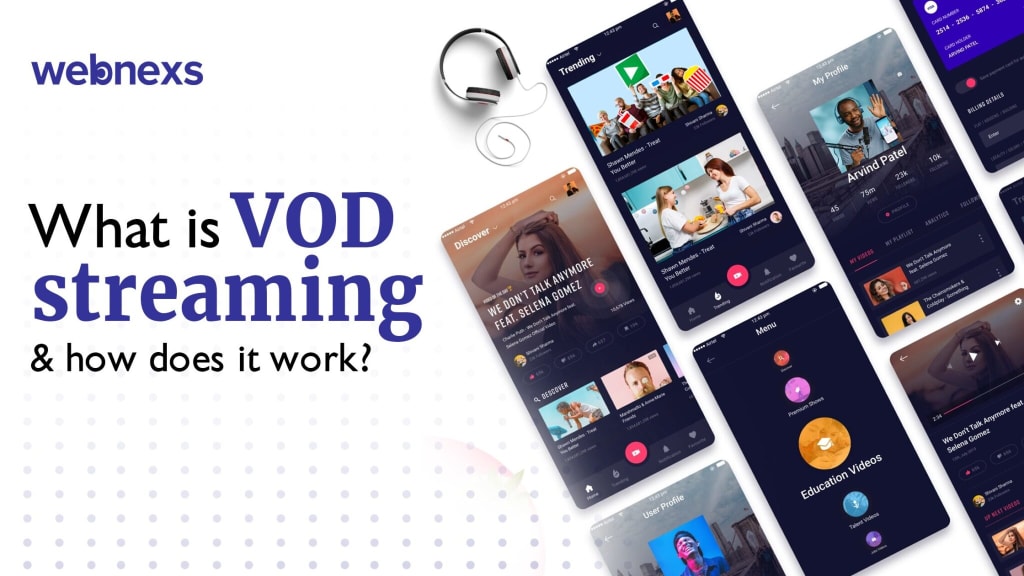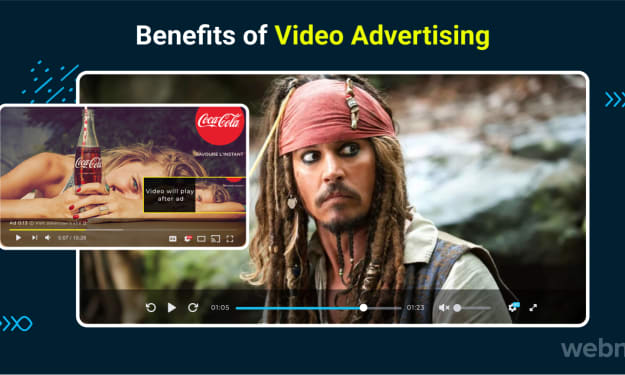What is VOD streaming and how does it work?
VOD streaming

VOD streaming which is also known as “Video on Demand streaming” allows people to watch popular videos anytime and anywhere. In the past, viewers were restricted to watching only what was available on TV sets at certain scheduled times. This created a need for more flexible viewing options that could be accessed from any device.
Research from Google shows that 13 to 64-year-olds have shifted to using online video streaming platforms for consuming all types of content – from traditional media to modern shows and movies.
“According to Global Market Insights, South Africa’s Pay-TV streaming video-on-demand industry is projected to experience an 18% surge in VOD business by 2026”.
Some of the factors driving this growth include increased internet penetration and global adoption of smartphones, remote viewing flexibility, the availability of attractive video packages in the Asia-Pacific market, and the rise of live streaming to avoid social gatherings.
Statista projected that, in 2021, an average of $47.86 revenue per user will be generated from VOD services. This number is expected to grow even more in the future, with over 2 billion users forecasted to use these services by 2025.
What is VOD Streaming?
Video On Demand streaming allows them to watch videos at their convenience and on any device that supports it.
VOD vs OTT – VOD platforms include Netflix, Disney+, and Hulu all popular services also known as OTT Platforms. Official partners of the network provide these services for consumer-oriented entertainment purposes. These sites do not allow independent creators to upload their content.
Videos from independent creators and organizations can be hosted and delivered through video hosting platforms like Webnexs. Such a program facilitates video management, monetization, and delivery. Associated content delivery networks enable these platforms to deliver content online (CDNs). CDNs are a collection of globally dispersed servers that deliver content to businesses and online audiences quickly and reliably.
Professional-grade These platforms give broadcasters complete control over the distribution of their content. White-label and custom branding options are available from the best providers.
VOD Platform Statistics & Trends:
As VOD services become more mainstream, providers are increasing their OTT pricing strategies in order to reach out to a wider audience. In South Africa, according to Global Market Insights, it is predicted that Pay-TV VOD streams will experience an 18% increase in business growth by the year 2026
By rising internet penetration, the global adoption of smartphones, and an increasing need for social distancing. The convenience of remote viewing and alluring video packages provided by Asia-Pacific markets have also greatly contributed to the rise of VOD.
It offers an average revenue per user of $47.86 in 2021, and the number of users is predicted to reach 2,218 million by 2025, according to Statista’s projections. With its rapid growth, it continues to be one of the most popular online platform services available.
Difference between live and VOD Streaming:
For a variety of reasons, VOD streaming differs from live streaming. While video-on-demand libraries consist of previously recorded audio and video content, real-time is the main difference.
You should be aware that choosing one method leads to another for the majority of brands. If you want to repurpose live videos, you can. If you want to create an effective video marketing strategy, you need to plan.
Live streaming:
The biggest advantage of live streaming is that it allows customers to experience events in real-time. Being a part of a lively online event gives them a sense of belonging. A sense of exclusivity and community is created by live streaming.
Even in the business world, it can be a valuable tool. Brands can reduce costs and improve service by maintaining an active online community They can deliver the same experience online as they would at an in-person event without having to pay for travel, lodging, or meals.
In addition, brands can use live streams for product demos and press releases. Because of this, the audience and employees are kept in the loop about product or service updates.
Live streaming is technically more resource-intensive than Video on demand. In addition, the number of messages per block is greater than before. This reduces the time between streaming events and the remote players.
VOD (Video On Demand)
As opposed to living, VOD serves a different purpose. Users can watch content on any internet-connected device at their convenience. This isn’t limited to movies or television shows. A video-on-demand library can include tutorials, educational content, motivational messages, and other forms of entertainment.
VOD’s explosive growth can be attributed to modern, busy lifestyles. You can access the content at any time of day. In addition, VOD streaming allows broadcasters to fine-tune their content strategy before going live.
Videos can be recorded, edited, and improved by the creators before they are released to their audience.
How does the OTT Platform work?
Cable and telecom networks are bypassed by over-the-top platform services, which do not require a subscription. There are usually different subscription rates for each of these OTT providers, and each includes a specific bundle of their products. As a result, the provider decides what content or channels users receive as part of the bundle.
Users should not be forced to pay for services they don’t want. Unless they upgrade to a more expensive package, audiences have no say in what they get.
Other restrictions include a need for a particular type of hardware, as well as access to regionally specific content (such as sports). OTT, on the other hand, is not like that.
Regardless of their location, equipment, or time of day, audiences have access to all authorized content.
As a result, OTT technologies monitor and adjust content delivery metrics in real-time to improve performance while minimizing disruptions.
Service providers can serve multiple streams at the same time thanks to features such as adaptive bitrate streaming. By offering a wide range of bandwidth options and device types, broadcasters can reach more people.
A better segmentation capability is another advantage of using OTT. Your users can sign up for the specific information they want to learn about instead of bombarding them with the same content. It will allow them to provide more detailed, actionable advice.
What makes a great VOD service?
Many consumer-based and social media video hosting options do not meet the needs of businesses and high-volume broadcasters.
This type of media outlet has poor security controls, limited monetization options, and focuses more on its branding than that of its users’
These broadcasters choose business-grade platforms to grow their brands and provide the best online content experience. Video hosting, live streaming, and VOD are all integrated by partners Webnexs to give organizations and influencers a complete solution.
Utilize your logos, colors, and images to ensure that your brand is front and center in the Video on-demand experience. No ads or interruptions are shown on your content.
Create your own OTT platform and mobile apps using API and SDK access.
Permissions and access controls for multiple users within your organization and each audience group can be customized. Protect your content with built-in safeguards to ensure that only the intended audience can view (or share) it.
Capture events as they happen and automatically save them to your VOD library with a live recording. Improve search options and functionality of your CMS by categorizing it with tags and filters.
Use world-class CDNs and offer multiple viewing options for various devices to provide exceptional user experiences.
Video On Demand(VOD) Streaming Monetization Models:
They want to monetize their content at another level of complexity, which is why they create VOD platforms.
Paid streaming services like Hulu, Netflix, and Disney+ are among the most popular.
1. Advertising Video On Demand (AVOD)
If you’re using AVOD, you’ll have access to content for free, but you’ll have to put up with sponsored ads.
YouTube is a good example. Without the need for subscriptions, AVOD lets broadcasters monetize their content without the need for paywalls.
2. Subscription video on demand (SVOD)
It is SVOD that most viewers are familiar with. In exchange for a recurring monthly fee, users have access to content. Consider Netflix or ESPN+.
3. Transactional Video on demand (TVOD)
The third option, TVOD, is the least popular. To stream and access specific content that isn’t available anywhere else, TVOD users must pay a subscription fee to access it. When HBO charges extra for an online boxing match or concert, that’s TVOD in action...know more
About the Creator
Rahul Prem
VOD and OTT specialist
Enjoyed the story? Support the Creator.
Subscribe for free to receive all their stories in your feed. You could also pledge your support or give them a one-off tip, letting them know you appreciate their work.






Comments
There are no comments for this story
Be the first to respond and start the conversation.